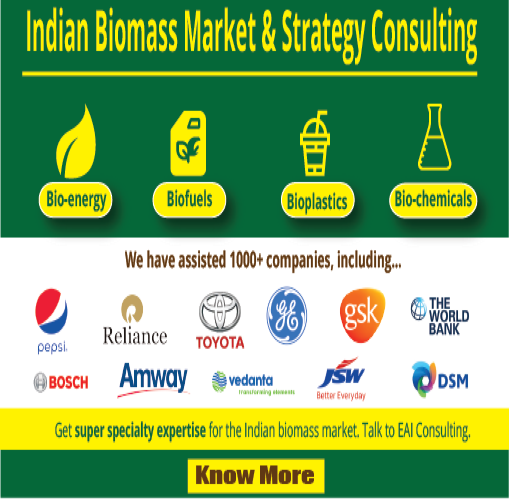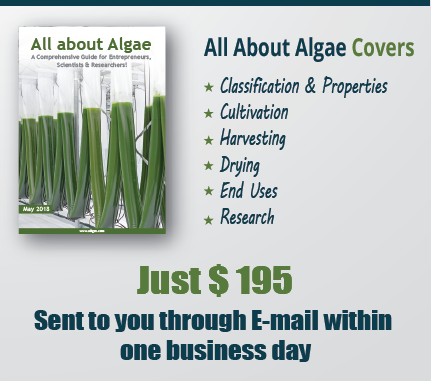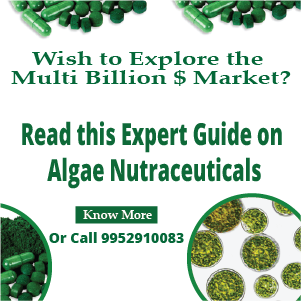The ponds in which the algae are cultivated are usually what are called the “raceway ponds”. In these ponds, the algae, water & nutrients circulate around a racetrack. With paddlewheels providing the flow, algae are kept suspended in the water, and are circulated back to the surface on a regular frequency. The ponds are usually kept shallow because the algae need to be exposed to sunlight, and sunlight can only penetrate the pond water to a limited depth. The ponds are operated in a continuous manner, with CO2 and nutrients being constantly fed to the ponds, while algae-containing water is removed at the other end.
The biggest advantage of these open ponds is their simplicity, resulting in low production costs and low operating costs. While this is indeed the simplest of all the growing techniques, it has some drawbacks owing to the fact that the environment in and around the pond is not completely under control. Bad weather can stunt algae growth. Contamination from strains of bacteria or other outside organisms often results in undesirable species taking over the desired algae growing in the pond. The water in which the algae grow also has to be kept at a certain temperature, which can be difficult to maintain. Another drawback is the uneven light intensity and distribution within the pond.
The NREL’s Aquatic Species Program (ASP) used open ponds for its experiments and has also favoured the same for the future primarily owing to its economic value. However, many companies today are trying out with Closed Pond systems and in many cases, with the much more expensive photobioreactors.

See the following pagae in Algae Cultivation:
Cultivation of Algae in Open ponds
Cultivation of Algae in Closed ponds
Cultivation of Algae in photobioreactor
Cultivation of Algae in Desert
Cultivation of Algae in sewage
Related Blog Posts
- Midwest Research Institute Advances Algal Biofuels Research Utilizing Open and Closed Bioreactors
- Cellular Optics for Open Pond Algae Cultivation
- Bionavitas Develops Algae Growth Booster for Biodiesel
- Aurora Biofuels Completes Algae Trial, Appoints CEO
- Skip Kemp, instructor of CCC’s aquaculture program use Bogue Sound for algae cultivation
- Biotechnology of algal biomass production: review of outdoor mass culture systems
- Algal sludge turns to fuel in Christchurch, New Zealand
- Microalgae: Biotechnology and Microbiology By E. W. Becker - Book Review
- Lipid Productivity Of Algae Grown On Dairy Wastewater As A Possible Feedstock For Biodiesel
- Algenol and Sapphire Energy Pursue Algae as Fuel
- Bionavitas Inc. Grows Algae In Fertllizer Run Off
- Primafuel, Converting Algae to Green Gasoline
- Biofuel industries need to be moved to sunny areas
- Japan Scientists Say Floating Seaweed Can Fight Global Warming
- Symbiotic Microalgae and Fish Production Method in Ponds
- OriginOil Grows Algae in a Better Way
- Simgae Low Cost Algae Production System from Diversified Energy & XL Renewables



